John Hurrell – 12 February, 2014
Dignity therefore is linked to self love, not in the sense of vanity but of self esteem. The kidney shape appears as a beautiful wooden inlaid table top, ubiquitous oyster shells, and as a wire thought-balloon hovering above a carved ‘Pynchon' head. The related heart (mirrored kidneys) can be seen in photos of entwined swans and as a large thick pretzel made of carved kauri.
Auckland
Oscar Enberg
The Pynchons S01E02: Slouching Towards Dignity
31 January - 1 March 2014
Oscar Enberg’s last Auckland show (at Gloria Knight) was The Pynchons S01E01 (ie. Series One: Episode One) so it makes sense that this new exhibition - his first at Hopkinson Mossman - is The Pynchons S01E02. The Hopkinson Mossman space is much larger than the Gloria Knight venue so this show has a roomier, less claustrophobic feel with freestanding sculpture you have to move around - and more wall-based relief sculpture that doubles as painting. There is lots of air and light - more space between the various discrete (but conceptually interconnected) items.
As with Episode One there is the hybrid sandwiching together of references to Meatball Mulligan from Thomas Pynchon’s short story Entropy, The Simpsons’ Barney Gumble, and John Larroquette’s John Hemingway. Like before, the enthusiastic consumption of alcohol is the common thread.
There are however crucial changes within this new batch of sculpture that typically is quite graphic - in the sense of three dimensional drawing. (Enberg likes squiggly wirelike lines that twist and float in space.) New visual symbols have been added to his repertoire, many of them organic (often bird food, like millet stalks or cuttlefish) and to do with consumption (linked to entropy and energy loss) or accumulated accretions like oyster shells (the gradual building up of ‘art’ meaning over time). On one level the nutritious avian nibbles might be titbits of ‘meaning’ offered to an art audience, and the hothouse / flat / aviary where Pynchon’s Entropy story takes place, an allegory for the art world.
The spiralling tip of a wilting entropic line is an often reoccurring feature in this installation, as is the new theme of recovery alluded to in the title. The necessary process of self examination is wittily referred to in one Kippenbergeresque sculpture where a lamp with a wine goblet head shines back on itself. With this show it is more Gumble and Mulligan and less Hemingway. Many of the graphic allusions come from The Simpsons, such as the kidney-shaped motif for dignity that when coupled (kissing) becomes a heart.
Dignity therefore is linked to self love, not in the sense of vanity but of self esteem. The kidney shape appears as a beautiful wooden inlaid table top, ubiquitous oyster shells, and as a wire thought-balloon hovering above a carved ‘Pynchon’ head. The related heart (mirrored kidneys) can be seen in photos of entwined swans and as a large thick pretzel made of carved kauri. The kidney as such (as a trope for self pride taken from a game of Pictionary in The Simpsons) is a wickedly funny image considering its function as a filter linked to urination, an act associated with drunkenness.
In the gallery blurb drunkenness is seen as a providing “a construction logic that plays out in a series of decompositions, warps and distortions”. That is over intellectualising perhaps. After all, the three series referred to are focussed on humour that is often instinctive and physical and loaded with pathos, for with drunkenness a certain amount of gravitas is obviously inescapable. So for Enberg’s project to be memorable it needs to go beyond just cleverness of layering and juxtaposition and hit a nerve, a gut feeling of emotional significance where his audience sits up ‘awakened’ that something serious is being aspired to.
However, in saying that, this show is (to me) rich in fascinating resonances. Outside of any awareness of novels and mass media, Enberg’s high tech forms, weird materials and ostensibly casual marks are compelling, especially within the larger space of Hopkinson Mossman. As sculpture that doubles as storyboards, paintings, props and furniture, and which attempts to stimulate the viewer’s interest in items of literature and television that they might not normally come across, it is unusual. And as Enberg’s audience may not share his passions in entertainment, or see humour or merit in his seemingly esoteric stratifications, a bold risk.
John Hurrell
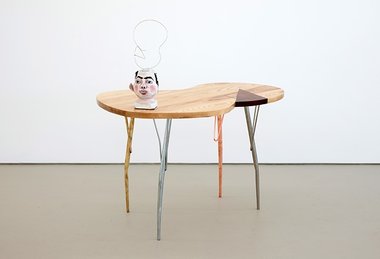

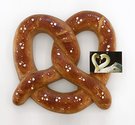

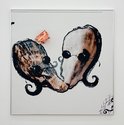
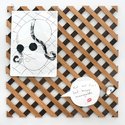
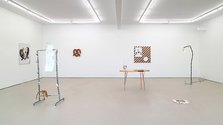

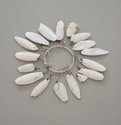
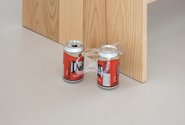

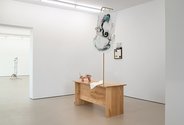
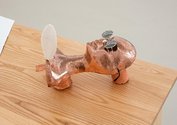
 Two Rooms presents a program of residencies and projects
Two Rooms presents a program of residencies and projects Advertising in this column
Advertising in this column



This Discussion has 0 comments.
Comment
Participate
Register to Participate.
Sign in
Sign in to an existing account.